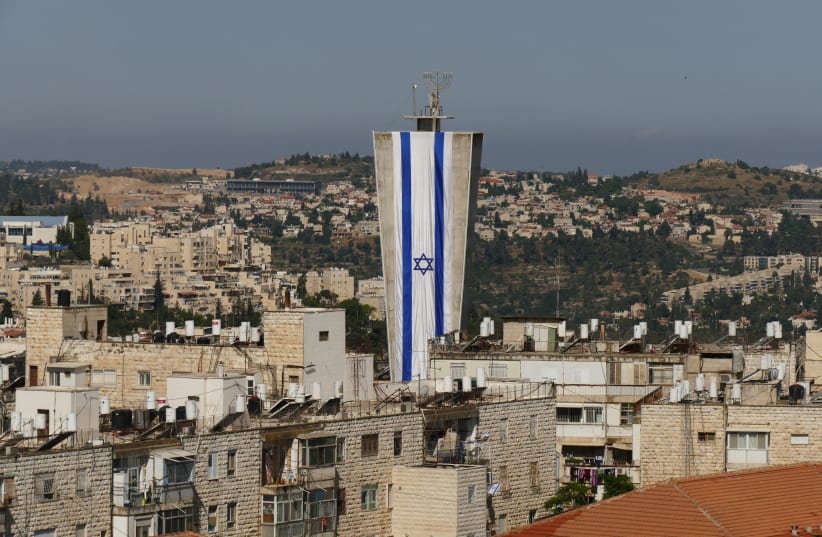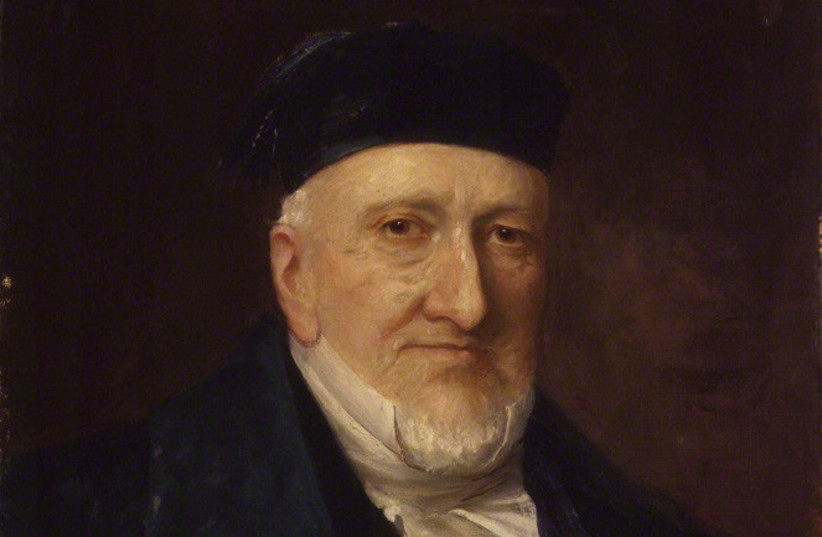This is the remarkable story about two Jerusalemites – a leading rabbi and his building-contractor colleague – who together have a vision which they believe will soon become reality: to establish a museum in honor of Sir Moses Montefiore inside the historic water tower in the Kiryat Moshe neighborhood in Jerusalem, one of the five Jerusalem neighborhoods named after Sir Moses.
At the base of the tower there already exists a delightful synagogue hall, and the dream is to turn the entire tower into an amazing observation point overlooking all the Jerusalem neighborhoods that commemorate the name of Sir Moses Montefiore, as well as to enable an overall view of the Holy City of Jerusalem in all its glory.
In 1911, Shmuel Kook, the brother of Rav Kook, established a textile workshop on the spot where the tower currently stands. The workers, in keeping with the wish of Rav Kook, would study Torah and also work for a living. And this is what happened up to the War of Independence.
In the second decade of Israel’s independence, years after the workshop had closed, it was decided to erect a tall tower especially on the site, which would serve both as a water tower and also – and above all – as a secret lookout point facing the nearby Jordan border up until the Six Day War and the reunification of Jerusalem. But with the reunification of the city, the need for an observation tower declined, and the water flow was also relocated. The site was abandoned, neglected, and became a nest for hornets, pigeons and all kinds of diseases.
Today the tower has become a wonderful center full of activity, and if the dream will be fulfilled, also a unique museum that will tell the story of one of the greatest of Jerusalem’s builders and of the Jewish world as a whole: Sir Moses Montefiore.
Through the tremendous efforts of the Shafran and Wasserteil families, the tower was given the name “Asher Tower” after Rabbi Asher Wasserteil, while the street was named Rabbi Shafran Street in honor of the great Romanian rabbi and father of the Shafran dynasty, Rabbi Bezalel Zeev Shafran (the Rabaz), all of this executed by the decision of the Jerusalem City Council.
The main part of the tower serves as a synagogue named after the distinguished rabbis, Shafran and Wasserteil, but it also secretes within it many projects that concern the development of the site as a whole in the foreseeable future, both with regard to its inner space that can be turned into a museum, and also an educational center for visitors in the fields of medicine, science and halacha – the areas of expertise of the Merhavim Center headed by its rabbi, Prof. Yigal Shafran, an international authority on medical ethics.
The tower, located at the highest elevation in the neighborhood, commands a view of the entire city, its exits and entrances. Thus it will be possible to pray in the tower as well as to enjoy the services of a library and study and guest rooms, also to gaze at broad expanses of the city, and to tell the story of the city of Jerusalem from the days of King David until today.
The museum and observation point are planned for the top of the tower, after it has been renovated according to a program prepared by a team of top international architects. A chain of special effects, laser rays and lighting will be automatically operated from the tower to sites many kilometers away, highlighting neighborhoods in the city and historic landmarks that will enable spectators to identify them from high up.
Today the lower level of the tower has already been turned into an entrancing and unique synagogue in the spirit of religious Zionism, together with a Torah and scientific center, already serving as a beacon and spiritual center for the surrounding neighborhood.
In this center they plan to organize a wide range of cultural, scientific and halachic events, Torah lessons and prayers, and the hosting of visitors and tourists.
Youth, soldiers, guests and those interested will arrive at the museum by means of a transparent-sided lift on the north side of the historic building, and will receive a lesson about the history of the city and Montefiore with a panoramic view of all the city, enabling many people, including the IDF’s disabled, to experience the special enchantment of Jerusalem.
This will also include details about Sir Moses and his wife, Lady Montefiore, and the location and its surroundings, with the decorated walls describing his activity and his pivotal place in the history of the nation returning to its ancestral homeland.
The place will subsequently also become a historic monument to the victims of the Holocaust and all the IDF soldiers and others who fell in Israel’s wars, who sacrificed their lives for the newborn state, for the city of Jerusalem, and for Montefiore’s dreams.
Rabbi Shafran and his team say they will be happy to hear from people or organizations interested in sponsoring or contributing toward the realization of such an important museum. ■
A version of this article was first published on Times of Israel. For further information please contact David Herman, Jerusalem at email: davidherman2@013net.net

